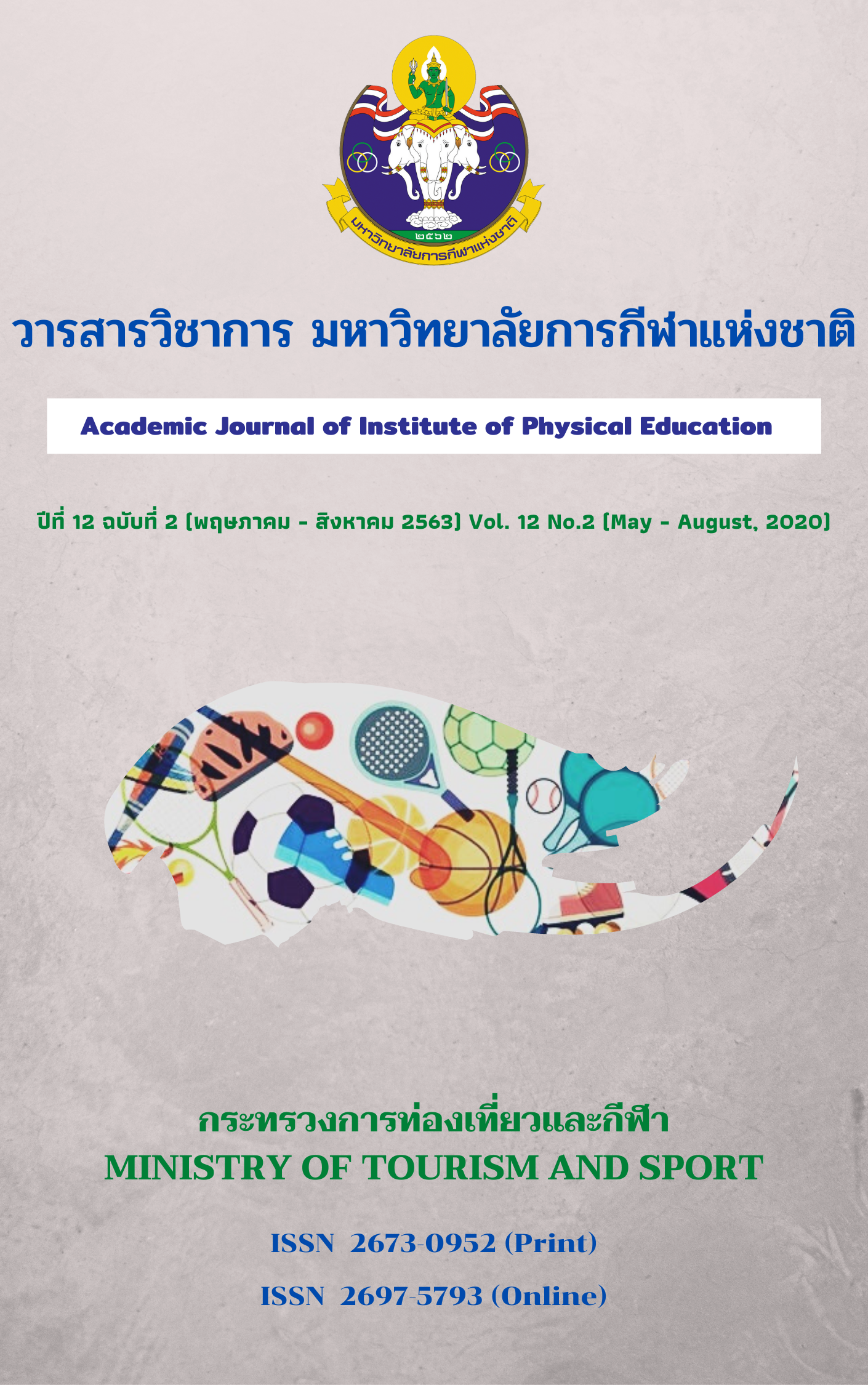MARKETING STRATEGY DEVELOPMENT FOR VALUE PERCEIVED OF MUD - FERMENTED FABRIC OF SUKHOTHAI ACCORDING TO THE CREATIVE ECONOMY CONCEPT
Main Article Content
Abstract
This study, Marketing Strategy Development for Value Perceived of Mud-Fermented Fabric of Sukhothai according to the Creative Economy Concept, aimed 1) to explore consuming behavior in mud-fermented fabric of Sukhothai, 2) to compare level of perception of mud-fermented fabric among consumers in Sukhothai in relation to individual factors, 3) to study marketing mix affecting the value perception of consumers, 4) to develop marketing strategies for mud-fermented fabric of Sukhothai based on creative economy concept. The quantitative data were collected from 400 consumers of mud-fermented fabric in Sukhothai, and the qualitative data were from mud-fermented fabric weavers in Baan Na Ton Chan and 20 mud-fermented fabric entrepreneurs in Sukhothai. Data analysis comprised of frequency, percentage, arithmetic mean, standard deviation, t-test for independent sample, one-way ANOWA, stepwise multiple regression analysis and content analysis.
The results of the study were as follows. 1) The consuming behavior in mud - fermented fabric in Sukhothai was found that their most reason to purchase was for self – consumption. The consumers reported themselves as influencing their choice of purchasing. The average cost of each purchase was between 2,001 – 2,500 baht once time per year. The place of purchase was Baan Na Ton Chan. They received information from the OTOP exhibition and purchased sarong most. 2) No significant difference of perception of mud - fermented fabric’s value was found in different sexes, ages, educational levels and incomes. 3) The marketing mix of consumers to purchase mud - fermented fabric in Sukhothai was found that price, product and promotion were at a highest level in overall which predicted the perception level by 54.00 percent, and 4) Mud - fermented fabric in Sukhothai marketing strategy of creative economy concept was found that: Product strategy, the product development should focus on quality, appearance, pattern, packaging and logo displaying the identity of mud - fermented fabric in Sukhothai. Price strategy, the price should be determined into high quality and general prices to inform consumers to realize the value of mud-fermented fabric which had special feature in Sukhothai. Place strategy, a direct channel, a zero-level channel or business to business (B2B) should be established. Promotion strategy, integrated marketing communication (IMC) including advertising strategy, public relation strategy and sale promotion strategy should be conducted.
Article Details
The published article is a copyright of the Academic Journal of Thailand National Sports University. The passage appeared in each article in this academic journal is a perspective of each author which is not related to the journal. Each author is required to be responsible for all components of his/her own article. If there are any mistakes, each author must be responsible for those mistakes on his/her own.
References
Anthika Thipchamnong. (2014). Market development of woven fabric products, Krasaesin District, Songkhla Province. Srinakharinwirot Journal of Research and Development, 6(12), July – December, 2014.
Chom Kaewkot. Executive vice president of Ban Na Ton Chan weaving group. (October 23, 2017). Interview.
Manop Chumun. (2010). Development of marketing management process in hand-woven cotton products: A case study of Ban Don Luang hand-woven cotton group, Mae Rang Subdistrict, Pa Sang District, Lamphun Province. Chiang Mai Rajabhat University.
Office of the National Economic and Social Development Council. (2011). Preliminary study report. Prikwan graffic. Bangkok.
Phibun Teepapal. (2013). Marketing Principles. Bangkok: Graphic Relations.
Somjai Bunthanon. (2009). Marketing Principles. (5th ed.). Nakhon Pathom: Nakhon Pathom Rajabhat University.
Suchinda Jiamsiphong and Piyawan Phetmee. (2017). Creating value added products from thai local knowledge: A case study of traditional woven fabrics. Journal of Community Development Research, 10(4), October – December.
Suracha Bunraksa. (2014). Guidelines for marketing strategies development to create value recognition for Thai desserts in Samut Sakhon Province according to the creative economy concept. (Master’s thesis). Silpakorn University.
Witawat Rungruangphon. (2009). Marketing Principles. (2nd ed.). Bangkok: Faculty of Commerce and Accountancy, Thammasat University.
Wuttiphong Chuatrakul et al., (2013). Strategies for mix of woven fabric products of Tai Lue handicraft marketing development, Handicrafts Group, Ban Laung Tai, Doi Saket District, Chiang Mai Province. Journal of Community Development and Quality of Life, 1(3), September – December.
Yupadi Thongkote and Others. (2015). Souvenirs Market for Tourism Development. A Case Study of OTOP Products Made from Mee Khit Fabric in Udon Thani Province. The 6th National Hat Yai Academic Conference, Hat Yai University.


